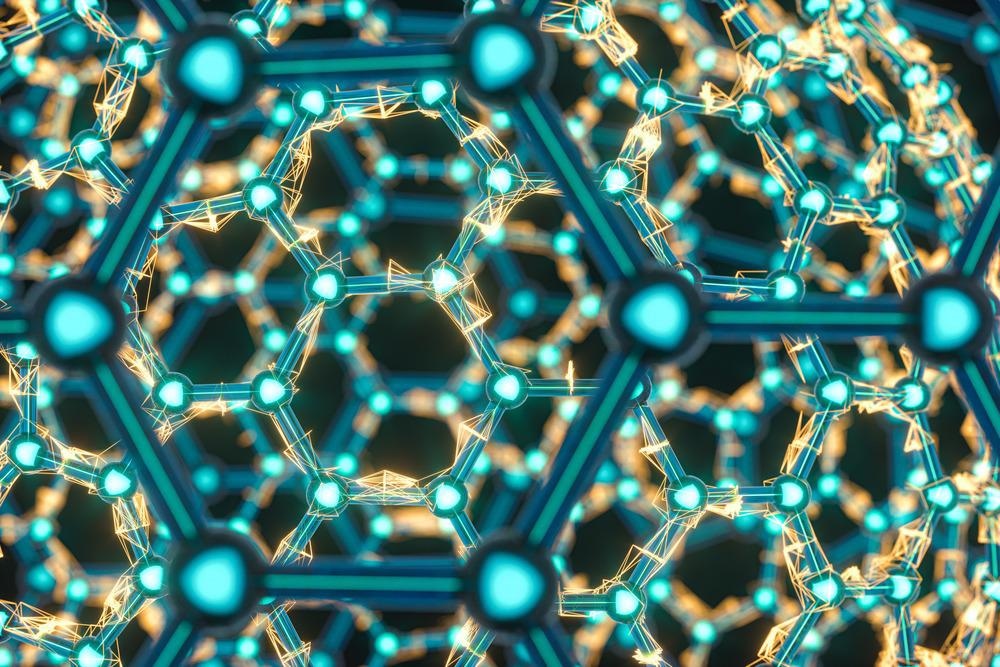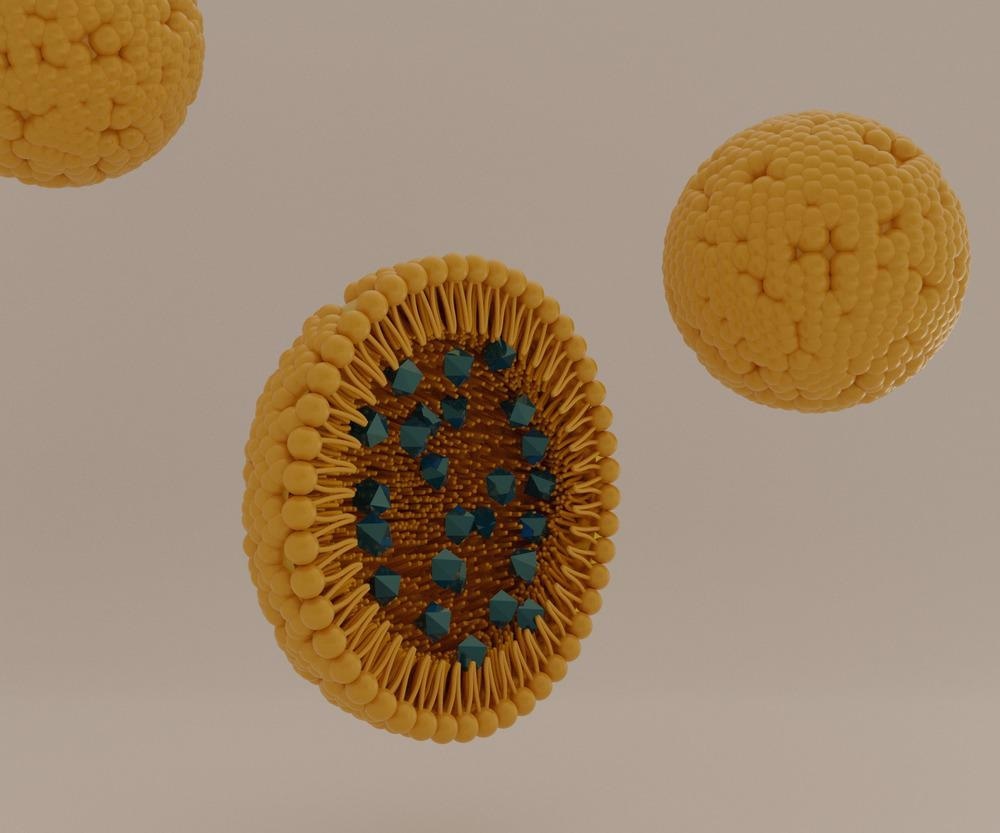Polymer-modified nanomaterials have received much more attention than conventional nanomaterials because of the outstanding interfacial contact between the surface of the polymers and the nanoparticles.

Image Credit: Vink Fan/Shutterstock.com
Polymer Modification Techniques
Blending, grafting, curing, and functionalization are all techniques to modify the characteristics of a polymer. Blending is the process of physically mixing two (or more) polymers to obtain the desired characteristics. In graft copolymerization, the monomers are covalently conjugated and crosslinked onto the polymeric chains. In contrast, in curing, the dispersion of an oligomer mixture generates a coating that bonds to the substrate by mechanical stress.
Grafting can take minutes or even days to complete, but curing is a lightning-fast process that takes only a fraction of the time. Simple molecules are replaced for the aggregates of the polymer backbone in derivatization.
One other technique to enhance the properties of polymers is to modify them to polymer nanomaterials. To manufacture polymer nanomaterials, top-down and bottom-up techniques are commonly used. Dissemination of prefabricated polymers generates polymeric nanoparticles in the top-down approach, whereas polymerization of subunits produces polymeric nanoparticles in the bottom-up strategy.
Polymer Modification on Nanomaterials
Many approaches have been used for polymer modification of nanomaterials. The most common and successful methods for functionalizing nanomaterials are polymeric grafting and surfactant-assisted modification.
Grafting polymers for nanomaterial modification can be accomplished in two ways: grafting end-functionalized polymers that actively react with the suitable nanoparticles or by developing polymer chains from an initiator-terminated, self-assembled monolayer. A high grafting percentage yield of polymer-modified nanomaterials can be produced by inducing graft polymerization using polymer activated domains.
Zhang et al. developed and modified zinc oxide nanoparticles with methyl methylacrylate acetate and synthesized ZnO/MMA nanocomposite films using polymer grafting on ZnO nanoparticles. Arrachart et al. modified TiO2 nanoparticles with undecenylphosphonic acid and synthesized TiO2/PMMA nanocomposite using in situ mass copolymerization.
Surfactants or macromolecules are commonly used in the modification of nanomaterials. Electrostatic attraction causes the polar molecules of surfactants to be preferentially deposited on the nanoparticle surface. Surfactant-modified nanoparticles can be utilized as a nano-filler for polymer matrices because the macromolecules minimize the intermolecular interactions between the nanomaterials and polymers, which diminishes inter-particle contact and prevents aggregation. Zhu et al. employed oleic acid to modify SiO2 nanoparticles and used them as a nano-filler for the polyamide matrix.
Advantages of Polymer Modification on Nanomaterials
Polymeric nanomaterials, which are made up of inorganic nanoparticles and organic polymers, are a novel type of material that outperforms their micro-particle equivalents. Polymer-modified nanomaterials exhibit unique qualities, including excellent mechanical strength, high electrical conductivity, and excellent photophysical characteristics.
For sophisticated industrial and technical uses, the mechanical characteristics of polymer-modified nanoparticles are critical. Gao et al. synthesized elastomeric copolymer–grafted SiO2 nanoparticle–toughened polyurethane nanostructures and investigated their mechanical properties in relation to graft depth and copolymer molar mass in SiO2 nanoparticles. The addition of copolymer-grafted SiO2 nanoparticles improved the polyurethane matrix's elasticity, fracture toughness, and crack propagation resilience.
Polymer-modified NPs are soft and easy to modify. Metal and other inorganic nanoparticles internalized into the modified polymer can create surface roughness. Roughness and permeability of particle surfaces can improve biological results.
Recent years have seen a significant increase in the use of polymeric nanomaterials as biomaterials due to their favorable characteristics in terms of ease in preparation and configuration, cytocompatibility, broad structural variety, and remarkable bio-imitative qualities.
Applications of Polymeric Nanomaterials
Because of the advantages that polymer nanoparticles have over conventional materials, their use in food packaging has expanded tremendously in recent years. The polymer-modified nanomaterials are mostly used to improve the barrier characteristics against ultraviolet rays and gases, as well as to improve resistance properties, durability, toughness, and stiffness, among other properties.
In the electronic industry, polymer-modified nanoparticles employed as dielectrics, insulators, conducting components, and covering materials. Ma et al. investigated the electrical performance of PE nanomaterials for power cable insulation using polymer-grafted TiO2 nanoparticles. According to the researchers, polymer-modified TiO2 increased the dielectric breakdown stability and space charge density of the PMMA matrix.
Synthesized inorganic or organic polymeric nanomaterials, as well as hydrogels and coatings, have all demonstrated their potential to be utilized in the fields of health and the environment. Furthermore, depending on the polymer used and the ability to control drug release from polymeric nanoparticles can be regarded as promising candidates for vaccine administration, cancer treatment, and targeted antibiotic delivery.

Image Credit: Love Employee/Shutterstock.com
Polymeric Modification of Nanoparticles for Drug Delivery
Nanotechnology is a hot topic in medicine delivery because it allows pharmaceuticals to be tailored to precise action locations. In recent decades, polymer-modified nanoparticles have become increasingly essential in drug delivery systems. They have several benefits over lipid nanoparticles, microcapsules, and micro-emulsions.
Polymeric nanoparticles (NPs) as drug carriers have several advantages, including the potency for controlled drug release, the capability to protect drugs and other particles with bioactivity from the environment, and the capacity to enhance their biocompatibility and therapeutic efficacy.
Polymeric nanoparticles are widely used to effectively target cells in diseases like cancer and the human immunodeficiency virus. Polymer-modified nanomaterials have several advantages, including customized drug delivery, minimal side effects, lower dosages, and better clinical effectiveness.
They can also aid with the physicochemical and biological aspects of medicine, as well as its pharmacodynamic and pharmacokinetic characteristics. Polymer-modified nanoparticles can deliver drugs to specific cells with extreme accuracy, particularly when the targets are intracellular.
Continue reading: Optical Spectroscopy of Polymers.
References and Further Reading
Kango, S., Kalia, S., Celli, A., Njuguna, J., Habibi, Y., & Kumar, R. (2013). Surface modification of inorganic nanoparticles for development of organic-inorganic nanocomposites—A review. Progress in Polymer Science, 38(8), 1232-1261.https://doi.org/10.1016/j.progpolymsci.2013.02.003
Prabha, A. S., Dorothy, R., Jancirani, S., Rajendran, S., Singh, G., & Kumaran, S. S. (2020). Recent advances in the study of the toxicity of polymer-based nanomaterials. Nanotoxicity, 143-165. https://doi.org/10.1016/B978-0-12-819943-5.00007-5
Zhang, L., Li, F., Chen, Y., & Wang, X. (2011). Synthesis of transparent ZnO/PMMA nanocomposite films through free-radical copolymerization of asymmetric zinc methacrylate acetate and in-situ thermal decomposition. Journal of luminescence, 131(8), 1701-1706. https://doi.org/10.1016/j.jlumin.2011.03.065
Arrachart, G., Karatchevtseva, I., Heinemann, A., Cassidy, D. J., & Triani, G. (2011). Synthesis and characterization of nanocomposite materials prepared by dispersion of functional TiO 2 nanoparticles in PMMA matrix. Journal of Materials Chemistry, 21(34), 13040-13046. https://doi.org/10.1039/C1JM11964H
Zhu, A., Diao, H., Rong, Q., & Cai, A. (2010). Preparation and properties of polylactide–silica nanocomposites. Journal of Applied Polymer Science, 116(5), 2866-2873. https://doi.org/10.1002/app.31786
Gao, J., Li, J., Zhao, S., Benicewicz, B. C., Hillborg, H., & Schadler, L. S. (2013). Effect of graft density and molecular weight on mechanical properties of rubbery block copolymer grafted SiO2 nanoparticle toughened epoxy. Polymer, 54(15), 3961-3973. https://doi.org/10.1016/j.polymer.2013.05.033
Ma, D., Hugener, T. A., Siegel, R. W., Christerson, A., Mårtensson, E., Önneby, C., & Schadler, L. S. (2005). Influence of nanoparticle surface modification on the electrical behavior of polyethylene nanocomposites. Nanotechnology, 16(6), 724. https://doi/10.1088/0957-4484/16/6/016
Disclaimer: The views expressed here are those of the author expressed in their private capacity and do not necessarily represent the views of AZoM.com Limited T/A AZoNetwork the owner and operator of this website. This disclaimer forms part of the Terms and conditions of use of this website.